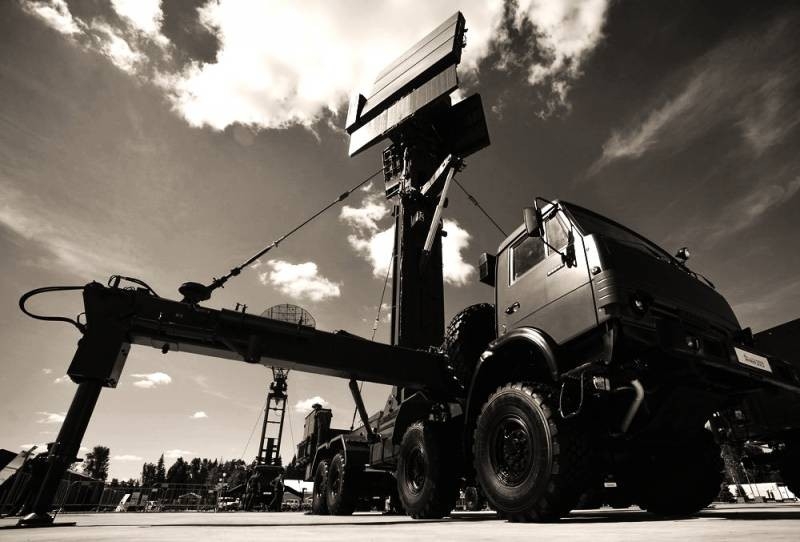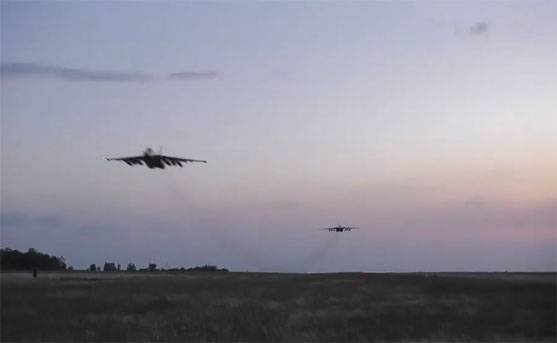Extremely close attention of expert circles, as well as numerous Russian and foreign military-analytical publications, were attracted by recent satellite photographs of the air base of the Russian Aerospace Forces "Khmeimim", made by the notorious Israeli optical-electronic reconnaissance satellite "Eros-B", at the disposal of the operator company "ImageSat", as well as attached online service "Observer IL".

This time, they did not capture the positions of the S-300PMU-2 Favorit long-range anti-aircraft missile systems near a large rocket manufacturing enterprise near Masyaf or the garrisons of the elite units of the Islamic Revolutionary Guard Corps in the area of the Baniyas-Latakia highway, and the latest Russian radar complex 48Ya6-K1 "Podlyot-K1", deployed in close proximity to the canvas of the runway of the Khmeimim air base. It is obvious, that the radar was delivered to Syria as part of one of the urgent flights of heavy military transport aircraft Il-76MD or An-124-100 "Ruslan", after which he immediately took up combat duty, providing for a continuous circular view of the airspace within a radius of 200-300 km from the Russian "air harbor" in the province of Latakia.
Radar complex "Podlyot-K1" - an indispensable tool for information illumination of the air defense group, covering the Russian air base "Khmeimim"
This raises a logical question: what are the goals of transferring the Podlyot-K1 radar detector to the area, the airspace above which is permanently "viewed" by the all-altitude detector of the centimeter range 96L6, part of the anti-aircraft missile system S-400 "Triumph"? Furthermore, known, what about monitoring the airspace over Latakia, Khamoy and Tartus are actively involved in the detection radar 9S18M1-3 "Dome" and 9S15M2 "Obzor-3", being the "eyes" of the Syrian air defense system "Buk-M2E" and Russian S-300V4.
To the layman it may seem, that we are talking only about the desire of the command of the Aerospace Forces of Russia, as well as the guidelines of the developer company (Concern VKO "Almaz-Antey") test the new radar in close-to-combat conditions. Meanwhile, in this case, any commercial interests of Russia's largest defense enterprise in the field of air defense, as well as the interest of the military in secret testing of new technology are relegated to the background, giving way to the implementation of preventive measures to ensure the safety of the technical personnel of the Khmeimim airbase, as well as the flight crew of the mixed operational aviation brigade of the Russian Aerospace Forces (crews of Su-25M3 attack aircraft, multipurpose fighter-bombers Su-34 and multifunctional fighters Su-35S, etc.). And there's absolutely nothing to hide here..
Operational-strategic situation, observed on the western and northern approaches to the air base, became extremely threatening. Due to the lack of carte blanche from Moscow to suppress the fortified areas and the positions of the artillery units of the Turkish army, located on the commanding heights east of the Al-Ghab valley (in the western part of the "Idlib viper") and covering the defenders "Tahrir ash-Sham", before the field commanders of the latter, new horizons opened up for successful sabotage and reconnaissance operations against the garrisons of the SAA and units of the MTR of Russia in the province of Latakia.
Furthermore, at the pro-Turkish Islamist detachments "Dzhebhat Tahrir Suriya", stationed in the settlements of Karamanli and Kalaz Takhtani (near the Turkish-Syrian border near the Jebel Turkman mountain range), it became possible to conduct successful offensive "throws" in the direction of the settlement. Rabia, Jacrooran and Kabir. This is evidenced by the recent successful sortie of militants of this formation in the area of the height 797 (surroundings of Kabir village), during which at least 2 MBT and armored car of Syrian government forces. In the future, this may lead to the advancement of the Tahrir Suriya militants in the direction of the Latakia-Yailadagi highway with the final exit to the Khmeimim fire control lines from the northern air direction (using dozens of cheap kamikaze drones).

UK is stepping up its military presence in the Persian Gulf
In this scenario, we can expect a 1.5-2-fold intensification of air raids on the infrastructure of the Khmeimim Air Base simultaneously from the eastern and northern directions. The number of drones used by militants will also increase significantly.. Consequently, in order to avoid a breakthrough of even a small part of the kamikaze UAV into the "dead zones" of the Tor-M2U air defense system and the Pantsir-S1 air defense system, units of several dozen drones approaching in low-altitude mode should be detected at a distance of 30-50 km from the air base, after which the immediate distribution of the objects taken for escort between the batteries of the above air defense systems should follow.
Meanwhile, radar detectors, attached to the Tor-M2U and Pantsir-S1 complexes, capable of detecting targets with an EPR of 0.05-0.1 kV. m (corresponds to the radar signature of kamikaze drones) at a distance of about 8–10 km and 15–20 km, respectively, which leaves combat crews and means of processing radar information not much time to distribute enemy UAVs between combat vehicles (especially during a massive strike). The multispectral optical-electronic sights 10ES1-E of the Pantsir-S1 complexes are not omnipotent either., the effective range of which directly depends on meteorological conditions, dustiness of the atmosphere, etc..
The only adequate solution to the problem is the deployment of the above-mentioned 48Ya6-K1 "Podlyot-K1" radar complex, what the command of the Aerospace Forces relied on. Unlike less powerful integrated "armor" detectors 1RS-1E / SOC, this product is a high-potential, low-altitude, high-resolution radar detector with a solid-state PPAR, operating in the S-band of decimeter waves and is capable of detecting medium-altitude targets with an EPR of 0.05-0.1 kV. m at a distance of 80-120 km, low-altitude with a similar image intensifier tube - at the time of exit from behind the radio horizon 27-35 km, which is one and a half to two times higher than the performance of the radar detection of "Thor" and "Shell". Furthermore, placement of the antenna post on a 12-meter folding tower provides an increase in the radio horizon, as well as covering additional "unobservable" low-altitude sectors of missile-dangerous air directions in theaters with difficult terrain.
The radar received a unique elevation mode of operation, allowing you to track targets with negative approach angles against the background of natural and enemy-generated EW interference
More importantly, a specialized mode of “ultra-low-altitude” scanning of airspace has been introduced into the software and hardware algorithm of the “Approach-K1” operation, providing for a review in a small elevation sector from -7 to +12 degrees with increasing energy potential of the beam. In combat conditions, this quality allows the 48Ya6-K1 radar to detect enemy air attack means, approaching with a decrease of several tens - hundreds of meters relative to the position of the antenna post. Even the all-altitude detector 96L6 of the S-400 complex cannot boast of such abilities., working with only 3-degree reduction.
In the conditions of the complex relief of the Jebel Ansaria mountain range, the above advantages of the Podlet-K1 radar are an ideal tool in providing reliable information about the air situation to operators of any type of air defense system, covering AVB "Khmeimim". System linkage between the 48Ya6-K1 radar and information consumers (anti-aircraft missile batteries or a mixed anti-aircraft missile brigade) will carry out full-time network-centric units - ACS "Polyana-D4M1" and unified battery command posts "Ranzhir-M1".
Eugene Damantsev











